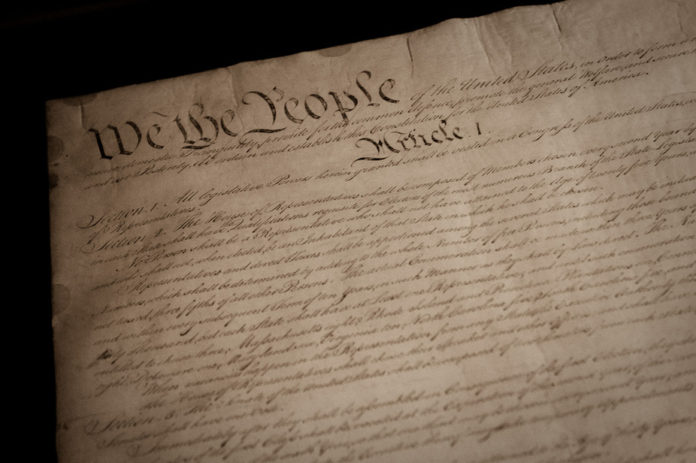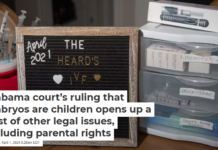
By Carol Graham, University of Maryland
Foundation essay: This article is part of a series marking the launch of The Conversation in the US. Our foundation essays are longer than our usual comment and analysis articles and take a wider look at key issues affecting society.
Every morning schoolchildren across America pledge allegiance to the flag and its promise of “liberty and justice for all.” “Life, liberty and the pursuit of happiness” is probably the best known phrase of the Declaration of Independence. These words and their promise about the opportunity to seek fulfilling lives are the basis of the American Dream.
But there is now increasing debate – and not only among politicians – about the extent to which the American Dream and the right to the pursuit of happiness are equally available to all citizens.
The fact is that US trends in opportunity are becoming more unequal by any number of measures.
American attitudes towards inequality and opportunity have historically been exceptional in comparison to other countries. The question is, do these attitudes, which are closely linked to how happy people feel, affect their choices about the future?
Measuring happiness
I approach these questions through measuring people’s well-being or through the study of – as it’s sometimes referred to – “the economics of happiness.”
This research shows, among other things, that if inequality is a sign of future mobility then it tends to have neutral or even positive effects. However, if it is indicative of persistent advantage for some and disadvantage for others, then the effect is negative.
People with more positive attitudes about their future mobility have higher levels of well-being. As a result, they are more willing to invest in the future. People with limited opportunities focus primarily on the short term. They discount the future not only because they have less time, energy or money to set aside but also because they have less confidence that those investments will pay off.
So how does increasing inequality in the US affect the way Americans think about the future? Is the happiness for all implicitly promised in the Declaration of Independence an elusive dream?
Well-being analysis has become increasingly accepted in economics and in the social sciences. Well-being metrics, which are based on individual responses to surveys, are particularly useful for exploring questions that data based on standard “revealed preference” theory (whereby people’s preferences are revealed by their purchasing habits) cannot answer.
These include situations where respondents do not have the capacity to reveal a preference or when behaviors are driven by beliefs or self-control problems (as in the case of excessive consumption of cigarettes or junk food). This, for example, is the case when people are asked about the impact of institutional arrangements that they are powerless to change, like inequality. So-called happiness metrics give us a novel tool to measure the linkages between well-being and attitudes towards mobility.
There are two distinct ways of measuring well-being. “Evaluative well-being” looks at how people think of their lives in their entirety, including their ability to find purpose and meaning. “Hedonic well-being” captures how people experience their daily lives and what happiness, stress, or anxiety they are feeling at a given moment.
Individuals with higher levels of evaluative well-being, who have more of a sense of what their futures look like and more control over them, may experience lower levels of hedonic well-being (because, for example, of being under greater pressure) as they work to make investments in those futures. Individuals with less agency to craft their futures focus more on day-to-day well-being both because their future outlooks are far less certain and because simply getting by each day can be a struggle.
Two Americas
What is striking about the results of our research is how differently poor and rich Americans look at the future.
There are two Americas: a wealthy group with high levels of life satisfaction and corresponding ability to plan for and invest in the future, and a poor group with lower life satisfaction, higher levels of stress, and much less optimism about the future.

Differences in life satisfaction between poor and rich Americans
Author’s calculations based on Gallup Healthways Poll 2013
Even the words most commonly used by people in poor places versus those in wealthy places reflect these very different outlooks. A recent analysis based on a Google search by David Leonhardt found that the most common words in the poor locations were religion, hell, guns, video-games, and diabetes. The most common words in the wealthy ones were baby joggers and baby bjorns, iPads, and exotic travel destinations. Getting through the day in one America; investing in knowledge and the future in the other.
Equally telling, the starkest gaps we find between the scores of poor and rich Americans are when we measure attitudes towards the belief that hard work can get you ahead. These beliefs, one might argue, are the pinnacle of the American Dream. And yet, according to a recent Pew poll, the number of Americans who still hold true to that belief has dropped – from 68 to 61% – over the past decade.
What is perhaps more remarkable, we find that the gaps between poor and rich Americans are much greater than those between poor and rich Latin Americans, a region long known for its high levels of income inequality. Why is this so?
Less stress down south
First, differences in experiencing daily stress between the rich and the poor in the US are significantly higher than they are in Latin America.

Author’s calculations based on Gallup World Poll 2006-2013, Author provided
While there is very little difference between the poor and the rich in Latin America when it comes to belief in the value of hard work, the gap between the rich and the poor in the US is twenty times greater. Or, put another way, the poorest in the US are much less likely to believe that hard work can get you ahead than are the poorest in Latin America while the richest in the US are much more likely to believe that hard work can get you ahead than are the richest in Latin America.

US versus Latin America gaps in hard work beliefs
Author’s calculations based on Gallup World Poll 2006-2013, Author provided
There are a number of complex explanations for these differences.
Most simply, it is a fact that Americans have experienced a weakening of social welfare and other public institutions in the past decades. Latin Americans, meanwhile, are finally reaping the benefits of investments in progressive social policies and conditional cash transfer programs for the poorest. Poverty rates are falling dramatically and along with them – albeit more slowly – overall inequality.
It is also the case that Latin America probably had greater room for upward movement, given its higher levels of absolute poverty, than did the US in the same time period.
An increasing body of well-being research is demonstrating that individuals with higher levels of well-being have better future outcomes. They have better productivity, health, and social behavior. This is in part because they are intrinsically motivated but also in part because they are able to have longer time horizons and preferences.
If one translates current patterns in well-being and attitudes about the future in the US into behavioral outcomes it seems likely that the gaps between the lives of the rich and poor will only grow larger.
This is why well-being research is so important. It highlights the critical importance of variables, such as health, education, social networks and optimism to individual and societal well-being. These are precisely the variables upon which well-being metrics show how divided Americans are.
In a recent paper, we find that living in neighborhoods with higher levels of average happiness is good for individual happiness. In contrast, living in neighborhoods with higher levels of average income is associated with lower levels of individual happiness (controlling, of course, for a host of confounding factors).
Greater focus on societal well-being may be one of many ways to begin to narrow these divides. The American public has been surprisingly tone deaf to discussions of increasing income inequality. Perhaps attention to the unequal “pursuit of happiness” will stir broader public debate.
![]()
Carol Graham does not work for, consult to, own shares in or receive funding from any company or organisation that would benefit from this article, and has no relevant affiliations.
This article was originally published on The Conversation.
Read the original article.




















